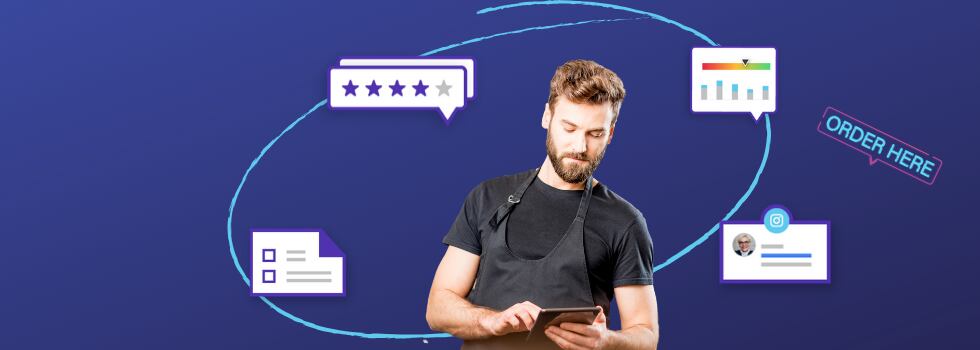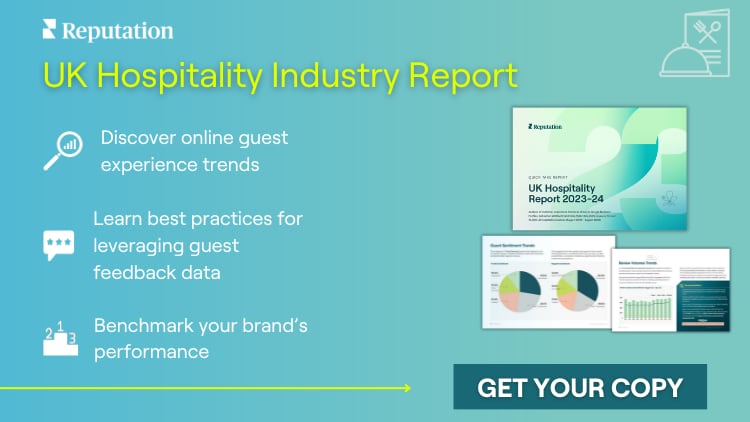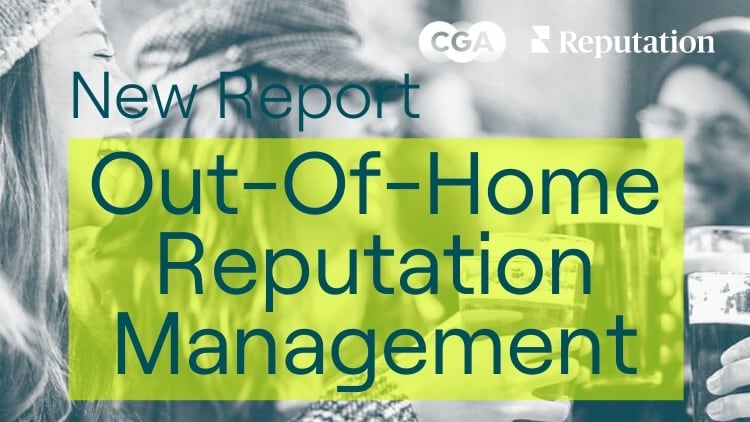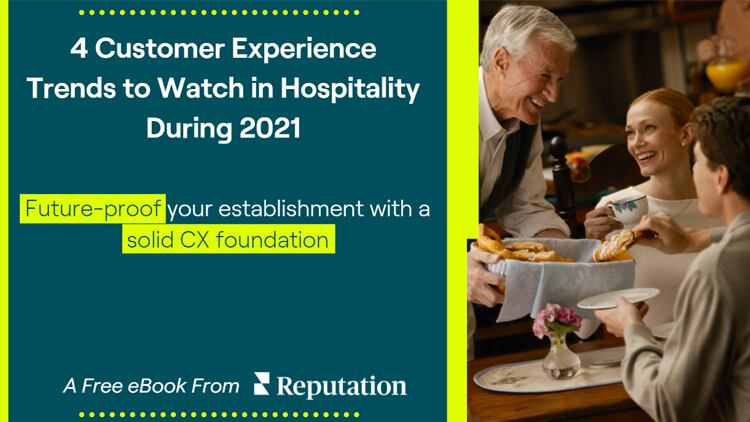And digital best practices during COVID-19 and beyond
Restaurants have long acknowledged the importance of online technologies in improving the guest experience, and have embraced digital transformation as consumers' expectations have evolved. The industry has shifted over recent years to more online interactions as guests brought their technologies into restaurants with the Instagram movement, but also pre- and post-visits, as consumers' social mentions, reviews and actions moved more and more online. COVID-19 impacted digital transformation by simply accelerating what was already happening. With lockdown in place, operators had only their digital front door available to keep servicing their customer base.
Indeed all communications moved online in a matter of days. Guests searched online to know which restaurants may be open, which ones are offering delivery or take-away services. The search term ‘Delivery’ related to food categories reached an all-time-high according to Google trends.
Social media and Google My Business were top of their search results as these platforms are likely to have live updates. For operators, it meant a multitude of places to keep up-to-date and for multi-site brands, this challenge grew even bigger.
At the same time, COVID-19 also brought a new kind of complication: furlough. As businesses were forced to shut down, cutting revenue temporarily, the large majority of operators have applied to the Job Retention Scheme provided by the Government to allow their staff to remain employed whilst not at work. This downcrease of employees available to maintain these digital updates and online communications created a further strain on hospitality businesses, regardless of their size.
The pandemic has accelerated the digital transformation needed by hospitality businesses that now have to rely on technology to increase the speed and efficiency of their processes, and provide an even more customer-centric experience. Hospitality businesses are turning to technology platforms to foster customer loyalty, communications and automotise processes to maintain data accuracy in all online environments a consumer may stumble upon.
While lockdown remained in force for the hospitality industry, and whilst firms were busy planning for re-opening, Reputation.com held a webinar to share best practices when it comes to digital and experience management. You can watch the webinar on-demand or read a summary below of actions operators should implement to maintain business continuity and come out of the crisis in the best possible way when it comes to their online reputation.

This is your new front door. More than half of Google searches are zero-click, meaning consumers find the answer to their search on the first page without having to click further. This also means that your Google My Business (GMB) knowledge panel can experience up to 10 times more traffic that your website. Investing in this listing is key to appear on top of the search results in the best possible light.
- Update Hours: Google added a temporarily closed feature. This does not impact SEO and provides an easy way for customers to know if you are currently operating. Google also enables Secondary Hours, allowing restaurants to distinguish opening hours and take-away hours for example.
- Business Information: Your business's long description is a great place to provide details about extra precautions you are taking or new services on offer. Similarly, update your Attributes if you’ve added delivery options to your Offerings.
- Google Post: This is the best way to maintain your GMB page with up-to-date information. It will expire every 2 weeks, so keep posting updates to maintain engagement. This post can include Click-To-Action buttons linking to your website or a special offer landing page. Note that Google also lifted chain restrictions to allow multi-site operators to publish Google posts to several GMB listings at once using platforms such as Reputation.com.
- Google Reviews: Now even more than before, customers’ trust relies increasingly on reviews. Google reviews growth is surpassing traditional review websites such as TripAdvisor and is heavily weighted in the Google search result algorithm. Even though reviews were paused during the peak of the pandemics, generating Google reviews should be top of mind as business is resuming via delivery and click-and-collect. Request reviews to your customers and respond to all reviews posted on your GMB pages.
Social media
Even though Google captures the vast majority of search traffic, consumers interact with brands from within their preferred social media platform. Although Facebook and Instagram account for the most users, other social channels allow you to engage with different demographics, and from Twitter to TikTok, they are all unique to consider and manage.
- Communicate any changes at your locations that local communities need to be aware of, including accommodations such as delivery services or updates to normal business practices (i.e. social distancing and updated hours).
- Inform your audience about your sanitisation efforts, such as installing sanitiser stations throughout your kitchens or implementing more frequent professional cleaning services.
- Share how employees at your locations are taking precautions, for example, staying home if they don’t feel well, washing their hands more frequently or practicing social distancing.
- Post major updates on ALL channels to ensure all your followers are aware.
- Share the positive news that’s happening around town, such as acts of service and kindness your staff is involved with, to help calm audiences and inspire positivity.
- Monitor social channels for customer feedback and direct mentions. This is not just about the content that you post on social media platforms as social listening also plays a significant role.
Survey
In addition to the aforementioned channels, you can directly tap into your customer bases’ knowledge and expectations. As operations are adapting to new requirements at their locations, you have the opportunity to ask your loyal customers what they wish to see happening in your restaurants.
- Ask your customers about their expectations. What safety measures would make them confident to come back on site? What services such as click-and-collect and delivery they would like to use?
- Engage genuinely with your local community and gather more data by having a wide enough sample so you can gather qualitative data you can rely on.
- Create a survey easy to respond to on multiple channels and devices to ensure a successful completion rate. Implement operational changes addressing customer needs based on the learnings you’ve captured.
Insights
Operators can monitor sentiments and mentions posted online by their customers. There is a wealth of feedback left online, even more so than before, offering an opportunity to operators to better understand customer experience and improve their services.
- Track important keywords online using the right technology so you are aware in real-time of what consumers are saying about your brand.
- Respond quickly to critical mentions by being alerted so you can maintain engagement and business continuity with your customer communication. Again, using technology will save you time and resources by automatising a large part of this process.
- Take action on ALL customer feedback from both unstructured and structured data together by bringing your survey results with the online feedback from reviews and social media mentions. Having a 360-degree view of your customer experience will provide operational insights you can act upon efficiently. Technology is essential to this process using Artificial Intelligence (AI) to easily extract themes.
Beyond COVID-19, the industry experienced a profound shift where customer expectations will be to find all the information they need to make a decision about where they will eat online. More than ever, consumer confidence and trust is now altered and they will make detailed searches before deciding on their next meal out. Will your restaurant show up in their next search?






